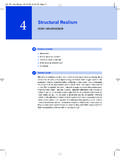Transcription of Impact Firecrackers - Private Data
1 ImpactFirecrackersbyJohn DonnerrevisedNovember 1996copyright 1996 Table of ContentsSection PageI. Introduction 1II. Chemicals 3 III. Globe Torpedoes 6IV. Cap Torpedoes 10V. Cane Torpedoes 12VI. More Cap Torpedoes 15 VII. Charles Nelson's Clay Torpedoes 17 VII. Cracker Balls 20 VIII. Auto Tire Blow-out Simulator 22IX. Exploding Blow Gun Darts 24X. Bibliography 27XI. End Notes 29 Impact Firecrackers1 IntroductionImpact Firecrackers results from several years of experimentation with differentmethods of making old-fashioned toy torpedo fireworks. Impact Firecrackers is not intendedas a comprehensive text for the novice pyrotechnist. Impact Firecrackers describes construc-tion of some of the old fireworks torpedoes, most of which have not been accurately detailed inprevious literature. Scant attention is paid here to basic lab procedure or basic pyrotechnicsafety procedures -- a knowledge of these is presumed for anyone who might seriouslycontemplate reproducing the experimental procedures in this report.
2 Never the less, I referanyone who needs basic safety training to Weingart's Pyrotechnics and to Lancaster'sFireworks: Principles and Practice as good sources for safety information. The author of" Impact Firecrackers " merely describes procedures, and does not advocate duplicating thework recorded in this Firecrackers is divided into three sections: a brief introduction, a section onchemicals used in this process, eight sections that describe small-scale, experimental manufac-ture of torpedoes, annotated bibliography, and end years ago toy torpedoes, Impact actuated exploding fireworks, were very popularfireworks items in the -- particularly popular with young ladies. Fireworks manufacturersproduced many sizes and kinds, using a variety of explosive compositions before they werefinally banned in the late 1950's. The tiny "Snap'n'Pops" of today are mere shadows of thetoy torpedoes once available. Some of the more famous varieties of that bygone era were thesilver torpedo, Globe Torpedo, the tube type torpedo, the "safety torpedo", the cracker ball,the ball-type cap, and the so-called "Japanese cap torpedo".
3 Patent documents reveal manykinds of torpedoes of which the inventors thought well enough to expend the considerable timeand money inherent in the patent process (1).From the standpoints of relative ease and safety of construction, safety of storage,transportation, and use, the Globe Torpedo is arguably the best option for the novice torpedomaker. The other varieties described call for use of more sensitive compounds such as chlorate/ phosphorous, or chlorate / sulfide / magnalium compositions. All of these compositions aredangerous. You be the judge: how skillful and more importantly, how foolhardy are you? Technical information about torpedoes is scarce, but for further information one canexamine The Chemistry of Powder and Explosives by Tenney L. Davis, Pyrotechnics byGeorge Weingart, Fireworks: The Art, Science and Technique, by Takeo Shimizu, and variouspatent listings since the late 19th century. Weingart's text, Pyrotechnics, describes themanufacture of silver fulminate torpedoes (2) and should be consulted as the best extantpublication describing the silver fulminate torpedo.
4 An interesting inside look at the manufac-ture of torpedoes from a nostalgic viewpoint is provided in the essay, "Cherry Bombs andSilver Torpedoes" by John Drewes. Other interesting items relating to torpedoes can be foundin some children's literature of the late nineteenth and early twentieth centuries; some of this2material has been reprinted in Pyro-Fax, a periodical published by the Fourth of July America-na Museum. Overall, though, reliable information about the early history of torpedoes isscarce. Torpedoes prepared with fulminating salts may conceivably have been around since themiddle ages or even earlier -- prepared in the laboratories of the alchemists in their ceaselesssearch for the transmutation of metals. This, however, is conjecture. I am not aware of anyrecord that would support that hypothesis. The chlorate based torpedoes can be dated withrelative certainty to the era after 1789, the year when Berthollet is credited with people have been seriously injured while using, and especially while attemptingto manufacture fireworks.
5 There is always risk in the manufacture and use of dangerousarticles such as these. Those who learn as much as they can about what they are doing stand amuch better chance of survival intact than those who do not. Do yourself a favor, and alwayswork to minimize hazards and risks. A little knowledge is a dangerous Firecrackers3 ChemicalsThe following briefly describes chemicals used in these processes, and some of their propertiesand hazards. For further information, consult other sources, such as the publications listed inthe powder (Al) Aluminum powder used in fireworks is available in many grades,usually described by particle size (mesh number) and particle shape. The finer the size, andthe flatter the particle shape, the more reactive the aluminum will be. For the manufacture oftorpedoes the preferred grade is called German Black, which is finer than 400 mesh size, andof the "flake" shape. Antimony Sulfide (Sb2S3) Antimony sulfide is a very reactive fuel often used in fireworksmaking.
6 Antimony salts are toxic, and often have some arsenic content, which is also toxic. For use in torpedoes, the chemical should be a very fine powder, at least 350 mesh, preferablyfiner. The relatively soft crystals can be ground with steel balls in a ball mill to the Dextrin is a chemically modified starch that is used as a binder in many pyrotechniccompositions. It is very sticky when wet, dries very hard, and is Quartz gravel of the grade used in aquariums, about 10 or 15 mesh and not polished isideal for use in torpedoes. The white marble variety does not work nearly as well because ofits low specific gravity and hardness. Magnalium (Mg/Al alloy) This is an alloy of magnesium and aluminum that is frequentlyused in pyrotechnics. It is more brittle and active than aluminum of similar particle size andshape. Magnalium is well known in the pyrotechnic community for the distinctive hissing andcrackling sound it imparts to many compositions. However, since it does not form a protectivecoating of oxide upon its particles at the microscopic level as does aluminum, it needs to betreated with special caution, especially in mixtures containing water (like the one describedlater in this article).
7 Magnalium, like magnesium, can make these mixtures more liable tospontaneous ignition, especially during the drying dioxide (MnO2) $iox)de (200 mesh powder) is a catalyst, that is, achemical which lowers the activation energy of the chemical reaction but remains substantiallyunchanged after the reaction is complete. Without MnO2, globe torpedoes require a muchharder toss to , amorphous (P4) The older varieties of torpedoes often used some form of so-called "Armstrong's Mixture" as the explosive component. Making these requires the use ofthe red, or amorphous, variety of phosphorus. This is not to be confused with the "White" or"Yellow" variety which is even more dangerously flammable and explosive than the red, andquite poisonous as chlorate (KCl03) Potassium chlorate is one of the most widely used and dangerousoxidizers in fireworks manufacture. When used carefully and prudently, it is perhaps the mostuseful oxidizer at our disposal. However, as with all chlorates, become familiar with itsproperties before using.
8 Mixtures containing chlorates are notoriously sensitive to shock,friction, and temperature change. Mixtures of chlorates with sulfur or sulfides, and especiallymixtures with phosphorous are prone to spontaneous combustion or detonation. Otherchlorates, such as sodium chlorate, are not suitable for use in torpedoes. Titanium (Ti) Titanium metal powder is useful in some compositions because it can cause achange in flame color to white, or add a shower of white sparks to a flame or report. Titaniumdoes, however, increase the sensitivity of most compositions to shock or friction and so shouldbe used only with great care. For use in torpedoes, material of about 40-60 mesh is (H2O) Water used as an ingredient in preparing torpedoes should always be distilledwater. Tap water contains impurities that often can affect the sensitivity of pyrotechniccompositions. Since torpedo formulations are neccsarily among the most sensitive of fireworksmixtures, it is essential that all ingredients, including water used, be as pure as , these chemicals above can be bought from dealers who supply them for purposesother than pyrotechnics.
9 Ceramics materials suppliers are often excellent sources for goodclay, as well as hard to find chemicals which are often used in glazes. Sometimes drugstorescan supply certain chemicals, but this is less true today than formerly. I have heard of excellentquality German black aluminum being used as a pigment by British printers; Aluminumpowder has been available for making silver paint in the past, so check your local paint chemical supply houses are now leery of selling chemicals, even to responsible adultsbecause of the fear that they may end up supplying illicit drug labs; some firms may simplywish to avoid liability problems. Another approach to obtaining hard to find items is to produce or process them yourselfon a small scale. Two possibilities are aluminum powder and potassium chlorate. A descrip-tion of small scale processing follows. Aluminum powder can be produced in particle grades ranging from flitter to very fineflake powder suitable for flash. One usable method is to use aluminum foil, a source alwaysreadily available.
10 I use a blender, a rock tumbler (the sort rock-hounds use), about two dozenlarge (about 3/4" to 1" diam.) steel ball bearings, aluminum foil of the cheapest, thinnest gradeavailable, and some stearin. The procedure begins with macerating the foil in an ordinaryImpact Firecrackers5household blender. Exercising care not to overheat the blender's bearings, I thoroughly grateup pieces of foil into a very coarse powder. I place the aluminum, the ball bearings, and about3 to 5% of the weight of the Aluminum of stearin into the rock tumbler and seal it up. I set thetumbler on wooden blocks so that it sits at about a 20 degree angle from the horizontal. Thiswill increase the tumbling action of the steel balls. I run the improvised ball mill continuouslyfor about three weeks or so. I check the powder inside every few days to see what kind ofprogress I'm making. When checking the powder I have opportunity to remove coarserpowder grades for use, and introduce oxygen into the system which allows the aluminumparticles to build up a protective coating of oxide which will prevent pyrophoricity.






